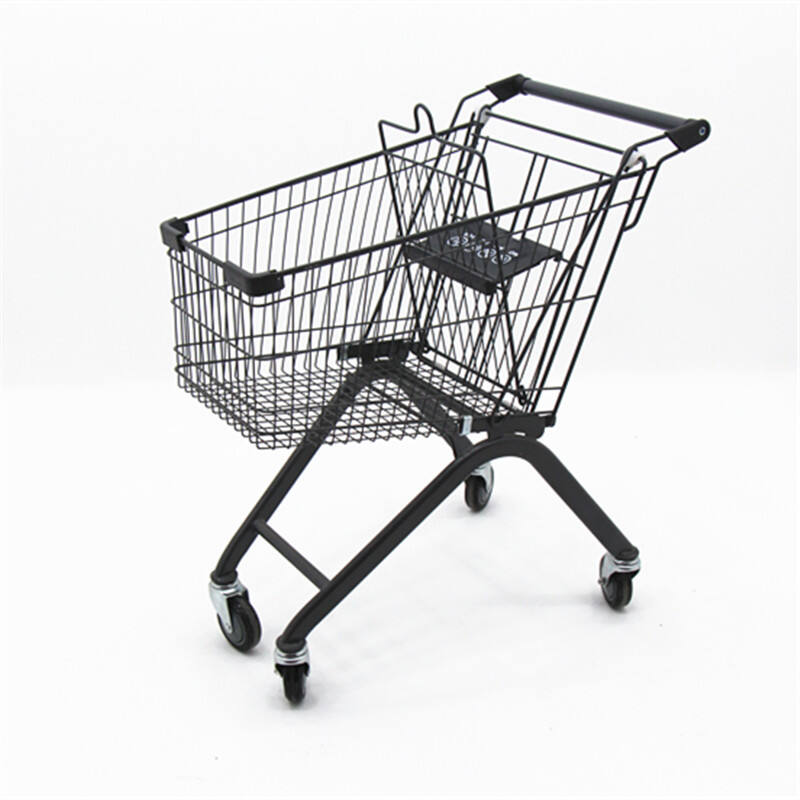Transforming Retail Experiences Through Smart Shopping Solutions
The humble supermarket basket has evolved from a simple carrying tool into a cornerstone of modern retail innovation. Today's supermarket baskets represent more than just convenience – they embody the intersection of customer experience, operational efficiency, and sustainable retail practices. As brick-and-mortar stores continue adapting to changing consumer behaviors, these essential tools are being reimagined in ways that enhance both shopper satisfaction and store performance.
Forward-thinking retailers are discovering that supermarket baskets can significantly influence shopping patterns, customer comfort, and even purchase decisions. The strategic implementation of these versatile tools has become a subtle yet powerful way to differentiate store experiences and streamline operations. From ergonomic designs to smart technology integration, the possibilities for innovation are remarkably diverse.
Revolutionary Design Features in Modern Shopping Baskets
Ergonomic Innovations for Enhanced Customer Comfort
Today's supermarket baskets incorporate sophisticated ergonomic elements that transform the shopping experience. Contoured handles with soft-touch grips reduce strain during extended shopping trips, while balanced weight distribution ensures comfortable carrying even when fully loaded. The thoughtful placement of support structures and reinforced bases provides stability without adding unnecessary bulk.
Advanced materials like lightweight polymers and recycled composites maintain durability while significantly reducing the basket's empty weight. These engineering improvements particularly benefit elderly shoppers and those with mobility challenges, making grocery shopping more accessible and enjoyable for all customer segments.
Smart Technology Integration
The integration of technology into supermarket baskets opens up exciting possibilities for both retailers and shoppers. RFID tags and QR codes embedded in basket designs enable real-time tracking of shopping patterns and basket utilization. Some innovative retailers have introduced smart baskets with built-in scanners and digital displays, allowing customers to track their running total and access product information instantly.
These technology-enhanced supermarket baskets can also facilitate automated inventory management and provide valuable data on shopping behaviors. The potential for personalized shopping experiences through smart basket technology is just beginning to be explored, with possibilities ranging from customized promotions to guided shopping routes.

Operational Benefits for Modern Retailers
Streamlined Store Operations
Strategic deployment of supermarket baskets throughout the store layout can significantly improve traffic flow and reduce congestion in high-demand areas. Modern basket designs include features for efficient stacking and storage, maximizing valuable retail space while ensuring baskets remain readily accessible to customers. The implementation of basket management systems helps maintain optimal distribution and reduces staff time spent on basket collection and redistribution.
Advanced materials and construction techniques have extended basket longevity, reducing replacement frequency and associated costs. The durability of modern baskets also means fewer maintenance requirements and improved hygiene standards, contributing to overall operational efficiency.
Data-Driven Insights and Analytics
Smart supermarket baskets equipped with tracking capabilities provide retailers with unprecedented insight into shopping patterns and customer behavior. This data helps optimize store layouts, product placement, and staffing levels based on actual usage patterns. Retailers can analyze basket movement throughout the store to identify traffic patterns and potential bottlenecks.
The integration of basket usage data with other retail analytics creates a more complete picture of the shopping experience, enabling retailers to make informed decisions about store operations and customer service improvements. This data-driven approach to retail management represents a significant advancement in operational efficiency.
Environmental Impact and Sustainability Initiatives
Eco-Friendly Materials and Manufacturing
Modern supermarket baskets increasingly incorporate recycled materials and sustainable manufacturing processes. Leading retailers are selecting baskets made from ocean-recovered plastics or renewable resources, demonstrating environmental commitment while maintaining durability standards. These sustainable choices resonate with environmentally conscious consumers and contribute to retailers' broader sustainability goals.
Innovative manufacturing techniques reduce energy consumption and waste during production, while end-of-life recycling programs ensure materials remain in the circular economy. The development of biodegradable alternatives and carbon-neutral production methods continues to push the boundaries of sustainable retail equipment.
Long-Term Environmental Benefits
Durable supermarket baskets reduce the need for single-use bags and packaging, contributing to waste reduction efforts. The extended lifespan of modern baskets means fewer replacements and less material consumption over time. Some retailers have implemented basket sharing programs between store locations, maximizing utility and minimizing environmental impact.
The focus on sustainability in basket design and deployment aligns with broader retail industry trends toward environmental responsibility. These initiatives not only reduce environmental impact but also appeal to increasingly eco-conscious consumers.
Future Trends and Innovations
Next-Generation Features
The future of supermarket baskets holds exciting possibilities for further innovation. Development is underway on self-sanitizing materials that maintain hygiene standards automatically. Advanced IoT integration could enable baskets to communicate with store systems, providing real-time inventory updates and personalized shopping assistance.
Emerging technologies like augmented reality could transform baskets into interactive shopping aids, providing product information, recipes, and navigation assistance. The potential for integration with mobile apps and loyalty programs opens up new possibilities for personalized shopping experiences.
Evolving Consumer Expectations
As consumer shopping habits continue to evolve, supermarket baskets will adapt to meet changing needs. The rise of hybrid shopping experiences, combining in-store and digital elements, may lead to new basket designs that facilitate seamless integration between physical and digital retail environments. Features supporting contactless shopping and enhanced hygiene measures are likely to become standard.
The trend toward experiential retail suggests future basket designs may incorporate elements that enhance the shopping experience beyond simple functionality. This could include interactive features, customizable elements, or integration with store entertainment systems.
Frequently Asked Questions
How do smart supermarket baskets improve the shopping experience?
Smart supermarket baskets enhance shopping through features like built-in scanners, digital displays showing running totals, and personalized shopping recommendations. They can also help with navigation through stores and provide product information, making shopping more efficient and enjoyable.
What makes modern supermarket baskets more sustainable?
Modern supermarket baskets are designed with sustainability in mind, using recycled materials, implementing eco-friendly manufacturing processes, and ensuring long-term durability. Many are also part of circular economy programs that include end-of-life recycling and material recovery.
How do retailers benefit from advanced basket tracking systems?
Advanced tracking systems provide valuable data on shopping patterns, help optimize store layouts, improve inventory management, and enhance operational efficiency. This information allows retailers to make data-driven decisions about store operations and customer service improvements.

